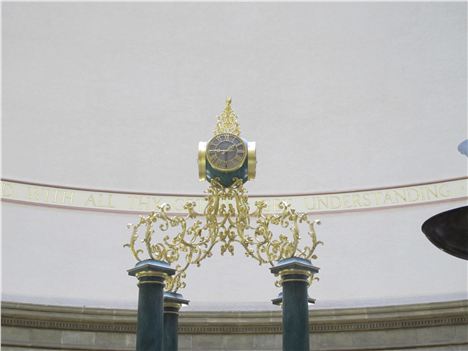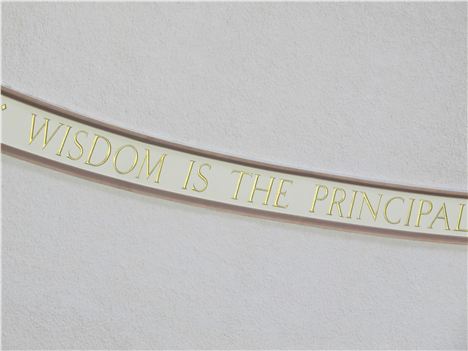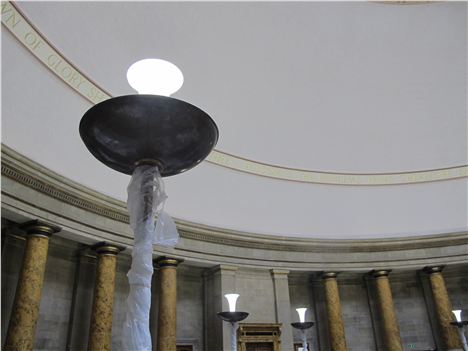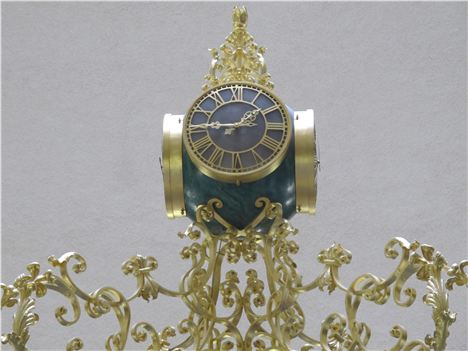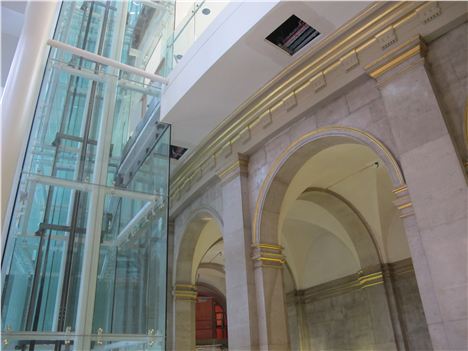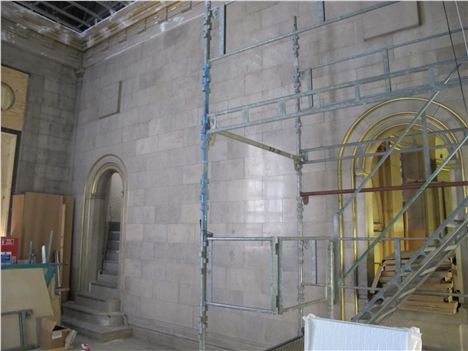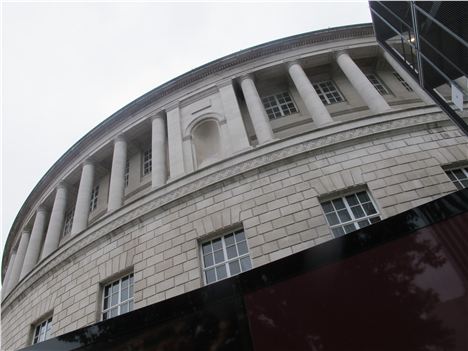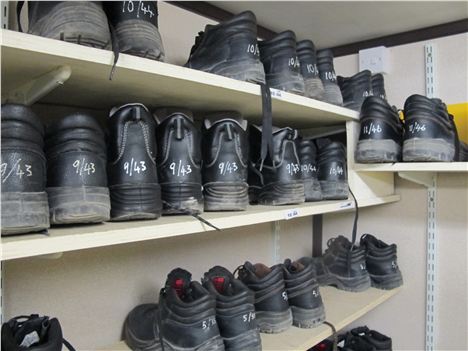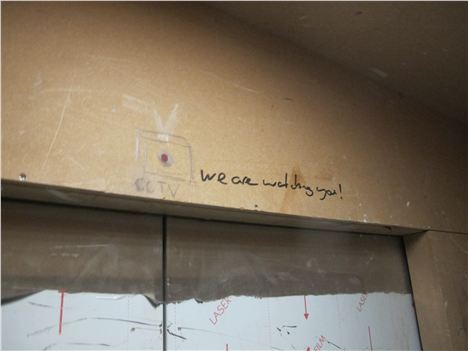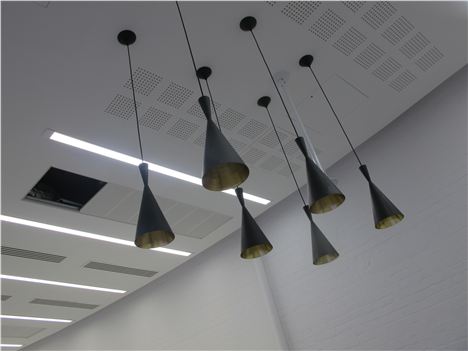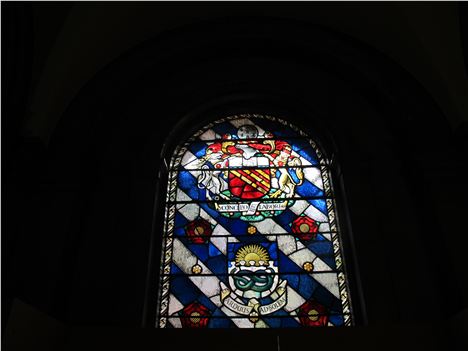"I WANT this to be Manchester's Living Room," says Neil MacInnes, head of Manchester's library service. "I want people to come and read here, see performances, meet up with people, enjoy it any way they can.
"The target is for two million visitors a year. That's double we had before closing. This should be Manchester's most public public building with something for everybody to enjoy."
Far more of Central Library's stunning rare books and manuscripts collection will be available to view.
Central Library reopens in spring 2014 although the move back into the buildings begins later this year. It will be a brighter space full of natural light in which people can float around with books and materials without being told off for moving from department to department. There will be performance areas, event spaces and state of the art digital retrieval systems.
Far more of Central Library's stunning rare books and manuscripts collection will be available to view. For historians, all the disparate collections such as those in The Greater Manchester County Record Office will be housed under one roof.
The original building dates from 1934 and was designed by Vincent Harris. The circular design was said to be inspired by the Pantheon in Rome. The two grandest spaces are the entrance hall, called the Shakespeare Hall, and the Reading Room. The former has a fine stained-glass window dedicated to William Shakespeare and grand plaster shields and coats of arms in the ceiling.
The main reading room on the first floor is round, dominated by the baldicchino motif of the clock balanced above the central desk. The original desks with eighty years of graffiti have been brought back into the space and a special sound dampening paint that will dull reverberation to about five and a half, from eleven - whatever that means - for those who can recall the domed space's startling echo.
The oldest book in Central Library is a handwritten,13th century copy of the Codex Justinianus, a code of law compiled for the Roman Emperor Justinian. The oldest printed book is a Latin Bible, from 1473. There are a total of 30 incunabula (books printed before 1501), including a copy of the famous Nuremberg Chronicles from 1493 and a book printed in 1497 by Wynkyn de Worde, who was William Caxton's successor.
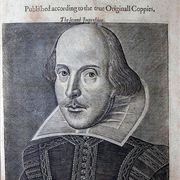 Second Folio ShakespeareOther highlights include many 16th and 17th century books, covering subjects from bibles to bee-keeping. There’s a copy of Vesalius's anatomy, De Humani Corporis Fabrica, from 1555 and a 1632 Shakespeare Second Folio; Latin and English editions of Camden's Britannia and maps and atlases by John Speed and others.
Second Folio ShakespeareOther highlights include many 16th and 17th century books, covering subjects from bibles to bee-keeping. There’s a copy of Vesalius's anatomy, De Humani Corporis Fabrica, from 1555 and a 1632 Shakespeare Second Folio; Latin and English editions of Camden's Britannia and maps and atlases by John Speed and others.
Early copies of ground-breaking books in science, medicine, politics and philosophy, including works by Isaac Newton, Robert Hooke, John Evelyn and Thomas Hobbes. Fine, illustrated books on art, costume and architecture, including Pyne's Costumes of England, Stuart & Revett's Antiquities of Athens, David Roberts Holy Land and Owen Jones' Plans, Elevations, Sections and Details of the Alhambra.
There are also books which use early photographic images, including Fenton's photographs of the Crimea. Private Press Books - an extensive collection of more than 700, beautifully produced, limited edition books, from almost all the British private presses, including Strawberry Hill, Kelmscott, Doves, Eragny, Essex House, Gregynog, Nonesuch and Golden Cockerel. Amongst the Kelmscott Press editions are a fine copy of William Morris's Chaucer and three other volumes given to the library by his wife. The Golden Cockerel Press 'Four Gospels' illustrated by Eric Gill, and the Doves Press 'English Bible' are other highlights.
Alan Garbutt, construction director, told Confidential: "This has been a tremendously rewarding job, and one I'm immensely proud of given the severe engineering challenges.
"Placing the vertical circulation core in the building took months but will ensure people can comfortably use the different levels of the library, a problem with the old configuration. When it reopens in 2014 this library will be as good as it gets anywhere in the world."
The total cost of the refurbishment is around £42m excluding shared services with the Town Hall Extension.
You can follow Jonathan Schofield on Twitter here @JonathSchofield or connect via Google+
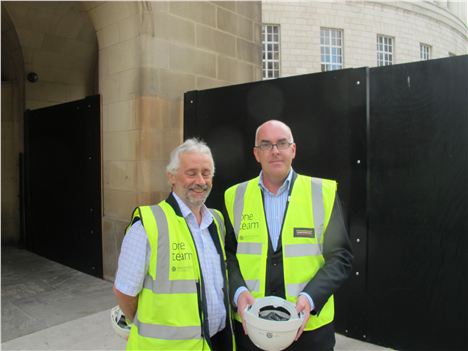 Alan Garbutt, construction director, has a smiley nap while Neil MacInnes, head of libraries, wants something putting in his helmet.
Alan Garbutt, construction director, has a smiley nap while Neil MacInnes, head of libraries, wants something putting in his helmet.
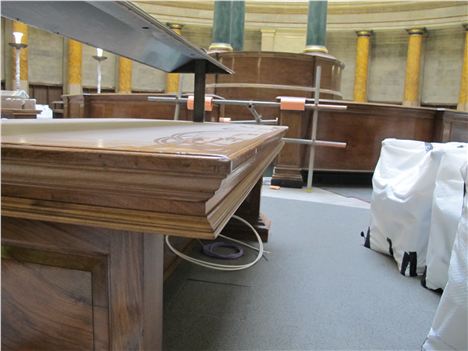 The original desks are back in place
The original desks are back in place
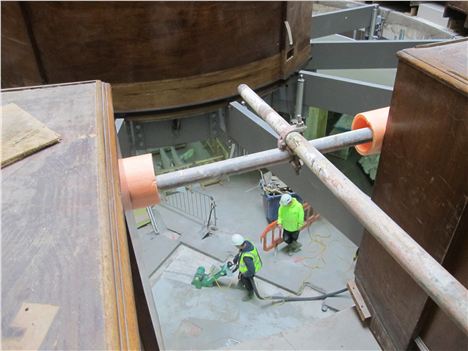 The 'oculus' - the area around the librarian desk in the centre of the Reading Room will have a glass floor looking down to the archive room below
The 'oculus' - the area around the librarian desk in the centre of the Reading Room will have a glass floor looking down to the archive room below
 The sweet inner curve of the library above the dome of the reading room
The sweet inner curve of the library above the dome of the reading room
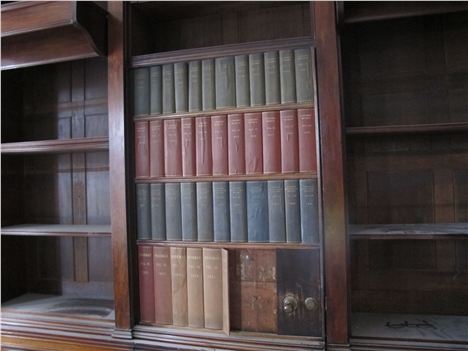 The false door in the Chief Librarian's office - to be used as event space when it re-opens
The false door in the Chief Librarian's office - to be used as event space when it re-opens
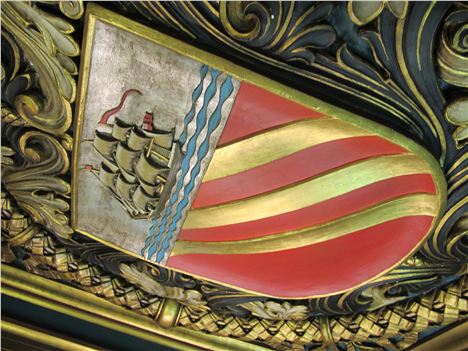 Manchester coat of arms on the ceiling of the Shakespeare Hall
Manchester coat of arms on the ceiling of the Shakespeare Hall
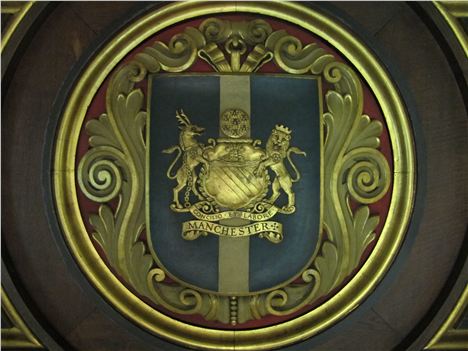 Another version of the coat of arms
Another version of the coat of arms
 Thomas Rowlandson caricature of learned library types in the special collections
Thomas Rowlandson caricature of learned library types in the special collections
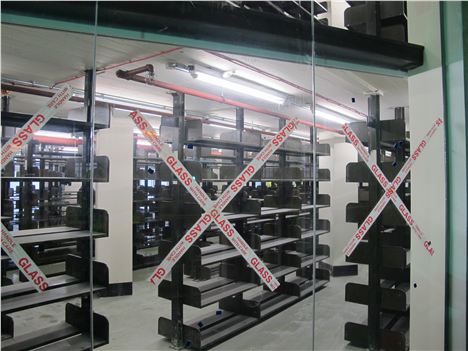 The old stacks viewed through a glass wall as required by English Heritage - the old system would have provided 8 minutes fire protection the new systems provide four hours
The old stacks viewed through a glass wall as required by English Heritage - the old system would have provided 8 minutes fire protection the new systems provide four hours
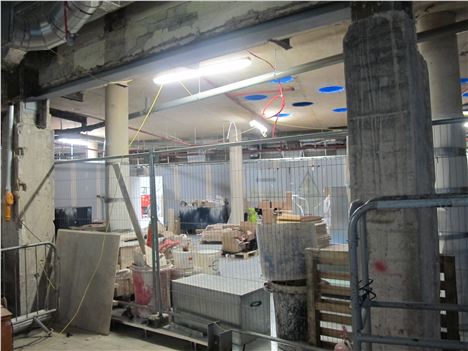 The huge highway connecting the Town Hall Extension with Central Library - it could fit four cars abreast so why...see picture below
The huge highway connecting the Town Hall Extension with Central Library - it could fit four cars abreast so why...see picture below
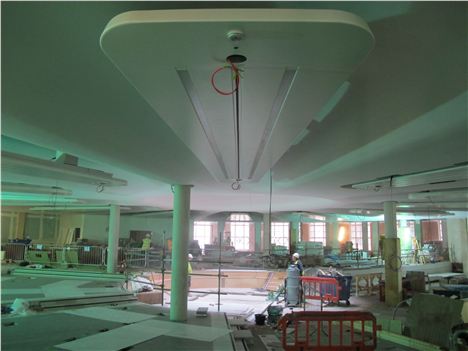 The new archive section takes shape, expect state of the art archiving, digital fun, performance spaces and generally lots of people
The new archive section takes shape, expect state of the art archiving, digital fun, performance spaces and generally lots of people
 The huge highway connecting the Town Hall Extension with Central Library - it could fit four cars abreast so why...see picture below
The huge highway connecting the Town Hall Extension with Central Library - it could fit four cars abreast so why...see picture below
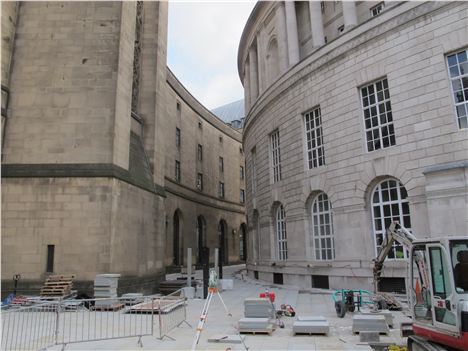 So why...see picture above, with all that capacity to transfer people between the buildings does magnificent Library Walk require being blocked with gates and a glass barrier albeit with doors? You can read our original story on the controversy that surrounds Library Walk here.
So why...see picture above, with all that capacity to transfer people between the buildings does magnificent Library Walk require being blocked with gates and a glass barrier albeit with doors? You can read our original story on the controversy that surrounds Library Walk here.
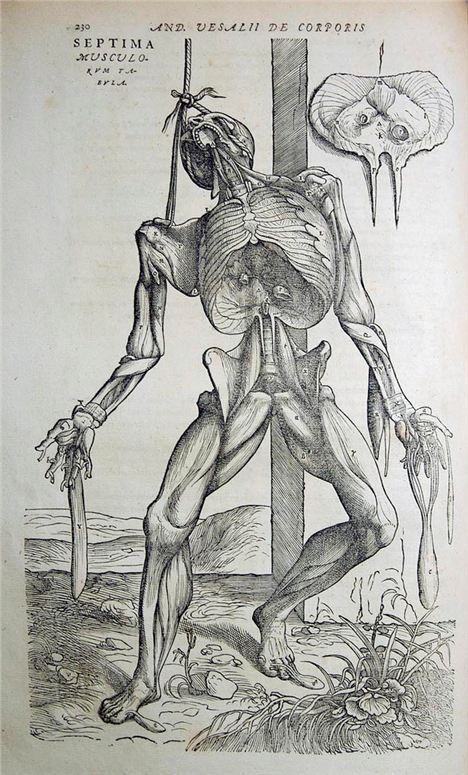 Vesalius's anatomy, De Humani Corporis Fabrica, from 1555 in the rare books collection
Vesalius's anatomy, De Humani Corporis Fabrica, from 1555 in the rare books collection








